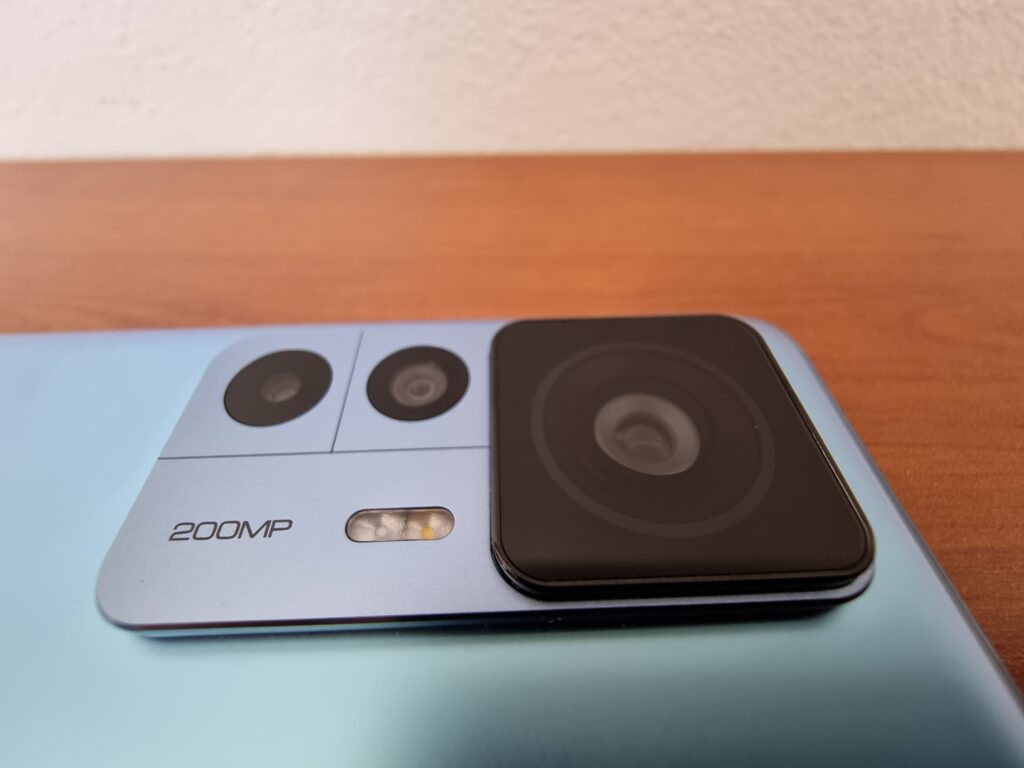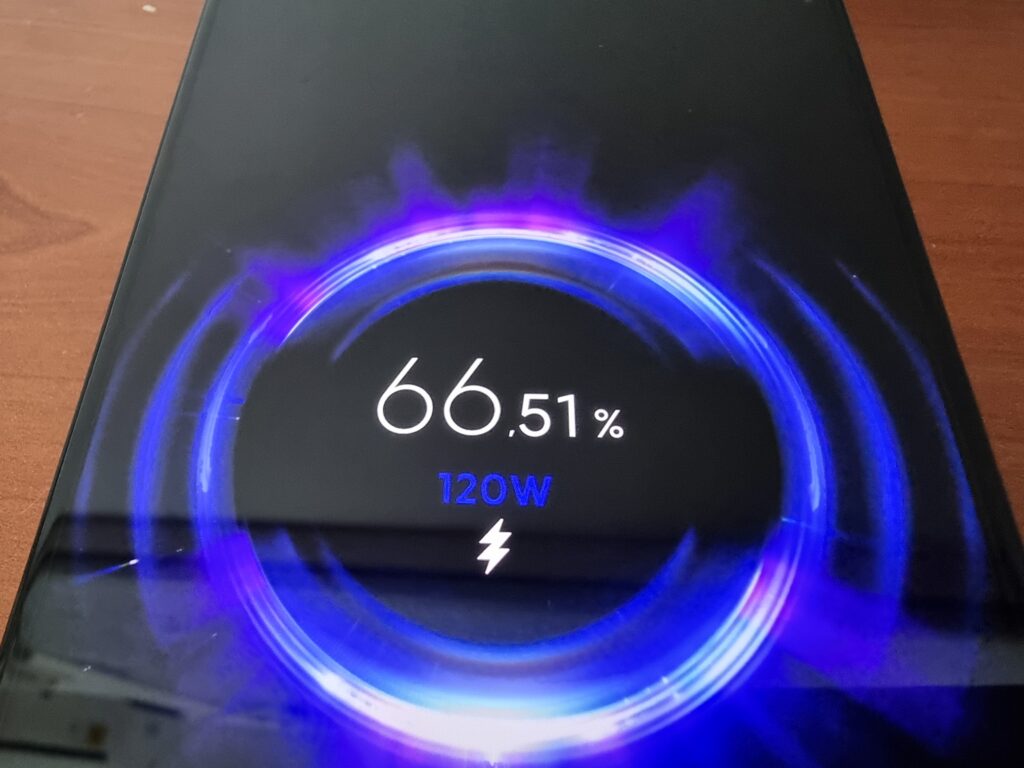XIAOMI

Model 12T Pro tested
Xiaomi missed the opportunity to introduce the first 200MP camera phone in just a few months. They were surpassed by Motorola with the X30 Pro phone, which is not available in Slovenia. Xiaomi did not make the same mistake.
On Tuesday, October 4, Xiaomi introduced two budget flagship phones: Xiaomi 12T and Xiaomi 12T Pro. The latter also reached our hands and we have already immortalized our first impression. After a few days of testing, has our opinion of the phone changed? Have we discovered anything new or alarming?
Advantages:
📱 Snapdragon 8+ Gen 1
📱 5000mAh 120W wired charging
📱 Excellent AMOLED screen
📱 Decent speakers
📱 Fascinating 200 MP main camera
Disabilities:
📵 Medium brightness
📵 No IP protection, just Gorilla Glass 5
📵 High Price
📵 Not enough secondary cameras
It sounds like a very strange combination, but that's how it feels when handling the new Xiaomi 12T Pro. Most of the sophistication is found on the back. This one is glass, with a slight curve around the edges. It also has anti-glare protection that does a good job of hiding fingerprint smudges and preventing the phone from slipping through your fingers. The placement of the new mobile phone's central element – the 200 MP camera – is also to our liking. It doesn't stand out much, but the camera array is still positioned so you can easily identify which phone it is from a distance. The camera housing blends in beautifully with the rest of the phone, which only enhances the look of the phone. At the bottom is the Xiaomi logo, which is also the only generally very minimalistic background element.
The front is typically flat, like most phones. The 6.7-inch screen has relatively thin edges (we've already seen thinner and thicker ones), in the middle there's a notch for the selfie camera, which doesn't affect the experience of viewing the content on the screen, unlike the dynamic island of the iPhone 14 Pro Max. The screen isn't curved, which we personally didn't mind, but it definitely makes the phone less refined.
It's not exactly a light weight (205 g), it can lose a few grams and a millimeter at the waist (163.1 x 75.9 x 8.6 mm). However, this shouldn't get in the way of one-handed use, and prolonged use won't cause carpal tunnel syndrome, which means dropping your phone is less likely. Which is good news as we get to the first obvious feature where the Xiaomi 12T Pro surprisingly skimps on the decision. The screen is protected by Corning Gorilla Glass 5 and not by Victus+ or Victus like its predecessor 11T Pro. There's also no official IP protection, which is an added unpleasant surprise, especially when you consider the high price. This shortcoming does not affect the fact that it is a quality device that works robustly in all respects. The physical buttons on the right are tactile and responsive. The screen also hides a reliable fingerprint reader, which tilts the scales slightly on the premium side.
Dynamically adaptive AMOLED display...The flat AMOLED display spans 6.7 inches between the two diagonals of the phone. It's not a typical AMOLED screen, but the kind that can adjust the refresh rate, in this case between 30, 60, 90 and 120 Hz. From a battery consumption standpoint, this is a welcome feature, although it's not quite the level of sophistication of the LTPO display. You can also set the refresh rate manually (60 or 120 Hz) in case of scenarios where the app doesn't automatically turn on fast refresh.
The screen is extremely responsive thanks to 480 Hz touch sampling, which will especially impress gamers. Brightness is surprisingly below average. In manual setting, the maximum brightness is 500 nits, but in high brightness mode it reaches 900 nits, which is a poor result compared to other flagship phones. Fortunately, this does not affect its use on a sunny autumn day.
The Xiaomi 12T Pro also justifies its premium status with support for Dolby Vision and HDR10+ and an under-display fingerprint reader.
The 200 MP camera is lonely...The 200 MP camera has captured all the headlines since the phone was announced. On paper, a larger sensor size usually means better photos in low light and shallower depth of field. What is promised on paper, the Xiaomi 12T Pro also delivers in practice. While we didn't spend much time with the new camera, we were more than happy with the results. Basically, the camera captures 12 MP photos using 16-in-1 pixel-binning technology, which combines 16 pixels into a super pixel. 200MP and 50MP photography are available, but you need to enable the Ultra HD function in the settings beforehand. The main sensor also has optical image stabilization (OIS), which works well, and 2x optical zoom, primarily intended for portrait capture.
The 200 MP camera is a great photographer. In good and low light, it captures a good level of detail without any issues in most cases. Low-light photography is very fast, with almost zero lag in post-processing. They manage to maintain a usable level of detail by zooming in to some extent, but it doesn't compare to Samsung, which will continue to reign supreme in this area. The 200 MP mode is not recommended for use in dark environments, as the quality difference from the standard mode is obvious.
The main camera can record in 8K (24 fps) and 4K (60/30 fps) resolution. Be careful when activating stabilization as the camera will automatically be set to 1080p resolution.
The secondary cameras, an 8 MP ultra-wide and a 2 MP macro, do not deserve much attention. The ultra wide-angle camera (120°) logically cannot be compared to the main lens and, at the same time, it does not bring any added value that makes us recommend its use. The same applies to the macro camera, which completely loses focus and its function is taken over by the main lens. We are pleased with the 20 MP front camera. The footage is clean and unsaturated in color.
Compared to previous iterations, Xiaomi has paid a little more attention to software processing. A very useful feature, especially for beginners, is Xiaomi ProCut, which helps to automatically crop and resize photos. It is only available for photos taken in Ultra HD mode, i.e. 200 MP and 50 MP. They also improved tracking of moving subjects.
Snapdragon 8+ Gen 1 – The best performance available for Android phones...What can we say about the processor that we haven't said so far. It is the most powerful Android processor which is credited with flagship performance and fast photo capture and processing. The synthetic tests are on par with other phones with the same processor. The Xiaomi 12T Pro dissipates heat well, at least during our short gaming test on Genshin Impact. In Slovenia, only the version with 8GB of RAM and 256GB of storage will be available.

Final opinion...The Xiaomi 12T Pro is an impressive achievement of the Chinese company. The AMOLED screen will impress every user, which also applies to the performance, which is on par with all flagship phones. The design is somewhat restrained and basic in appearance, and the 200MP main camera amply vindicates its media hype. The other cameras are just a pale shadow of the main lens, with the exception of the front camera, which manages to capture good photos. The battery is excellent, as is the charging, although some users will expect wireless charging at this price point.
mundophone
No comments:
Post a Comment